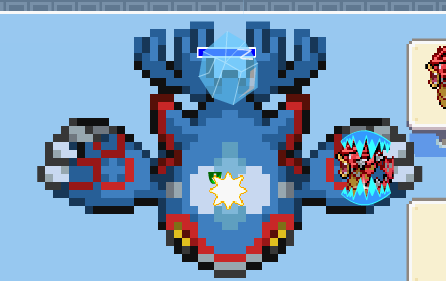Pokemon Tower Defense 1 Status Effect

While the general strategy of a tower defense game is to "dish out so much damage that the enemies cannot get deep into the stage," there are some occasions where inflicting a status effect may be more effective than dealing damage. In Pokémon Tower Defense, you will have a maximum of 6 creatures playing as towers at any single time. This means that there is a limit to exactly how much damage you can dish out in a single run. So it is important that players also try to make use of the different kinds of status effects that Pokémon are able to deliver.

Combining Status Effects
Poison and Other Lingering Effects: These are pretty good and simple combination attacks that will have your enemies standing around taking damage while they do not advance through the stage. Sleep, flinch, confusion, and any other ability that makes the enemy stand in place (or retreat) means that they will stick around to suffer more damage than usual. The best setup here is to have your poison Pokémon placed ahead of your status ailment creature. In between, you can have several other Pokémon to deal out extra damage. Another great combination is to have two Pokémon casting fear at both ends of your group. This will have the target running back and forth in between your attackers. These two combinations are actually pretty useful against plenty of boss-type Pokémon.
Understanding Attack Power
There are also times when you will notice that the attack power of an ability is very low, but this does not mean that the ability is weak or not useful. You should also check the description of the ability. Some skills only have 15 attack power, but the Pokémon will hit 2 to 5 times in a single attack. This means that you will have a chance to deal 30 to 75 points of damage. If the target is against a type with a weakness to your attack, that potentially turns into 60 to 150 points of damage. Some attacks, on the other hand, will increase under a variety of instances. Some attacks will double if you are targeting an enemy that has already been attacked by a different Pokémon, others will get increasingly stronger with each attack on the same target, and others will have a stronger effect on a Pokémon suffering from a specific status ailment. By combining these traits with the various strengths and weaknesses of various Pokémon, you will be able to deal enough damage to handle the tougher enemies.

Dynamic Pokémon Placement
Also, you might notice that the maps have plenty of Pokémon placement positions—often more than six. This will allow you to be a little dynamic about where you can place your troops at any time during combat. To take advantage of this, simply drag a Pokémon from one defending tile to another—just let them focus on where the enemy is. The game will pause while you are dragging a Pokémon from one spot to another, so there is no need to rush. Stages that have long routes or multiple paths are great places to do this in—most especially the ones with multiple paths. While you can easily divvy up your troops into two groups of three, they are much more effective when they all contribute to the damage. The only time it is recommended to split up is when both paths are assaulted at the same time.